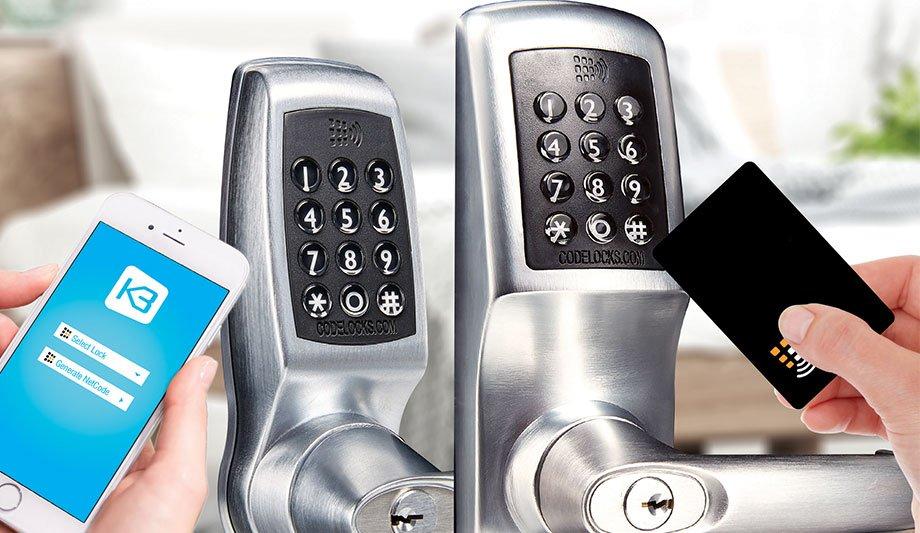As the vaccine roll-out proceeds, people across the UK are counting the days until we can get back to some kind of ‘new normal’. Just as we’ve seen in education and healthcare, the return to the workplace and other public spaces will be accompanied by enhanced sanitisation and social distancing measures.
To make the return as swift and safe as possible, those of us involved with managing, building and constructing buildings should consider how we can help facilitate and support those measures. Regardless of how rigorously we impose social distancing measures, there will always be some areas where we can’t help coming into contact with each other.
Sanitising door handles
Doors, for example – and door locks and handles in particular – are shared by nearly everyone in a building. Even in large, open spaces, we all need to pass through a single entrance. We all use the same door handles and locks – and they provide ideal surfaces for bacteria to breed and transfer.
Another solution is for staff to regularly sanitise door handles and locks
One solution to this problem is to provide hand-sanitiser dispensers at each door and insist on their use. But this can be difficult to manage in larger buildings where there may be multiple doors and entrances used by both staff and visitors. People could ignore the sanitisation rules too. Another solution is for staff to regularly sanitise door handles and locks – but this is a resource intensive option and, again, is dependent on everyone maintaining good practice.
Potentially harmful chemicals
A longer-lasting way to deal with the risk of locks and door handles spreading disease is to treat them with an anti-viral coating. These coatings come in various forms. Some, for example, slowly release anti-bacterial chemicals, while others have antiviral properties actually built into the material or the coating.
Those coatings with built-in antiviral properties tend to be longer-lasting and more effective, and also avoid the issue of releasing potentially harmful chemicals into the environment. A number of different solutions with built-in protection are currently in development, and some already available. Northumbria University, for example (as reported in last Month’s PSB Magazine), is working on a ‘super-hydrophobic’ coating for use on high-contact areas such as handrails and trolleys.
Optional antiviral coating
Codelocks is working on a coating that attaches biocides to nanoparticles
Another British company, Smart Separations, is working on a coating that attaches biocides to nanoparticles, and can be applied to a wide variety of surfaces. While these anti-viral coatings are either still in development or only available to large corporate clients, others are already readily available. Access control solutions provider Codelocks, for example is currently offering an optional antiviral coating with all of its products.
Clean by Codelocks is clear coating that uses nanotechnology that can kill bacteria in a matter of minutes. Clean by Codelocks utilises a process called photocatalytic oxidation. The surface of the coating reacts with light and converts harmful bacteria and germs into a non-toxic compound, resulting in a clean and hygienic surface.
Chemical cleaning products
The coating has been proven to eliminate the SARS-CoV-2 coronavirus (COVID-19) from surfaces within minutes and is resistant to chemical cleaning products, humidity, and UV exposure – all issues that can cause problems for traditional slow-release type coatings.
It’s been said that COVID-19 has been a great technology accelerator. This has been proven true, not only in the areas of vaccine research and development, or in cloud and digital technology but even in everyday objects that we take for granted such as locks and door handles. By building anti-bacterial protection into access control solutions, we can make schools, surgeries, workplaces, leisure centres and other public spaces safer for all.

